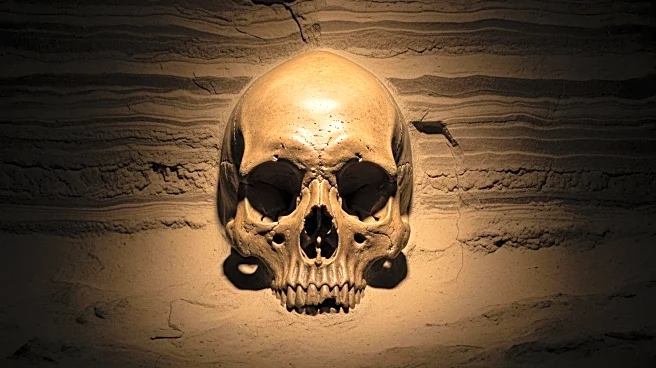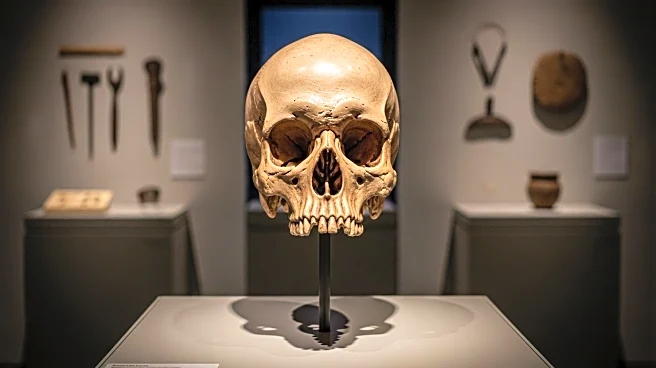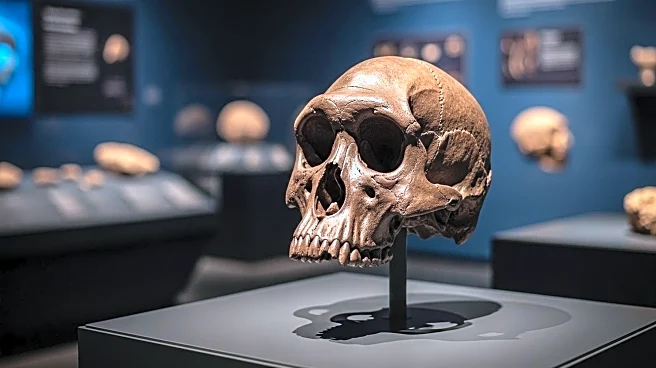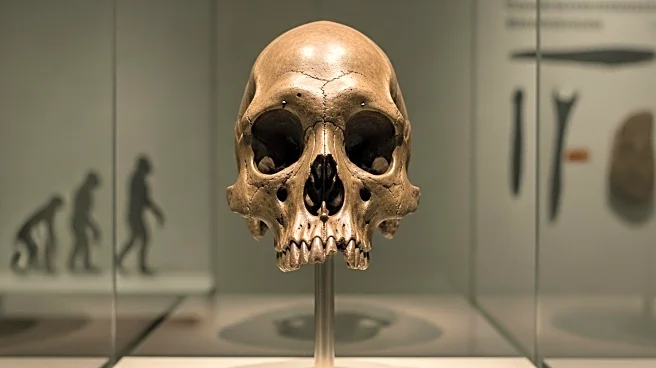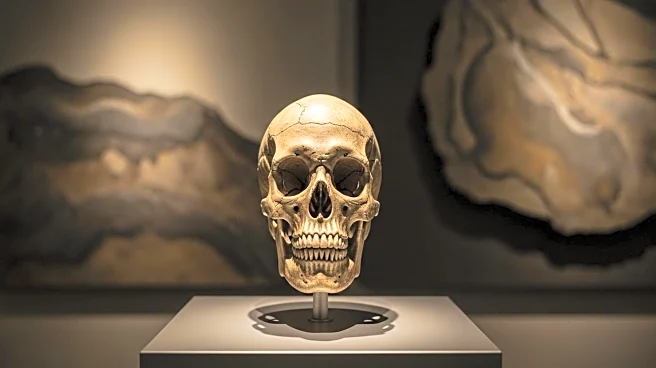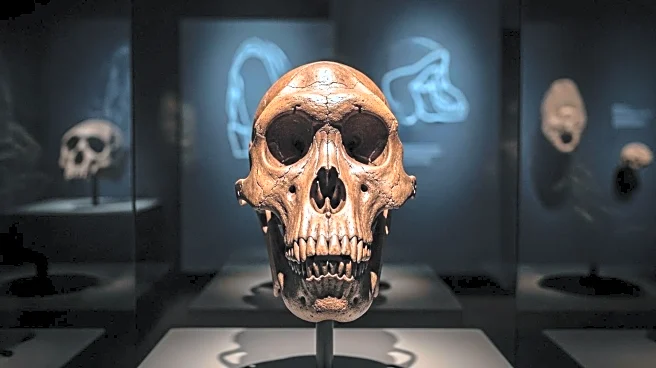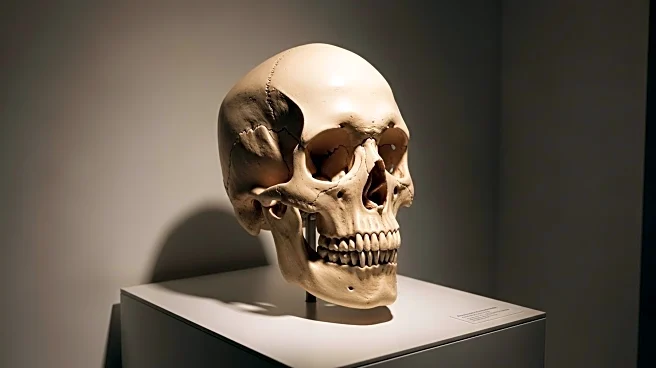What is the story about?
What's Happening?
A study based on the digital reconstruction of a million-year-old skull found in China suggests humans may have diverged from ancient ancestors 400,000 years earlier than previously thought, and in Asia rather than Africa. The skull, known as Yunxian 2, was initially classified as Homo erectus but now shows features closer to Homo longi and Homo sapiens. The findings, published in the journal Science, propose a more complex evolutionary split, challenging long-standing assumptions about human origins. The research utilized advanced CT scanning and virtual reconstruction techniques, revealing a distinctive combination of traits.
Why It's Important?
The study has the potential to reshape understanding of human evolution, suggesting a more complex and earlier divergence of human ancestors. If confirmed, the findings could alter the narrative of human migration and evolution, emphasizing Asia's role in hominin development. This challenges the traditional view of Africa as the sole cradle of human evolution, potentially impacting theories on human ancestry and migration patterns. The discovery could lead to further research and debate within the scientific community, prompting reevaluation of existing evolutionary models.
Beyond the Headlines
The findings highlight the complexity of human evolution and the need for further evidence to confirm the study's conclusions. The research underscores the importance of technological advancements in paleontology, allowing for more detailed analysis of ancient fossils. The study's implications may prompt new investigations into other early hominin species and their evolutionary paths. The discovery also illustrates the ongoing challenges in reconstructing human history, emphasizing the need for interdisciplinary approaches in evolutionary research.
AI Generated Content
Do you find this article useful?
